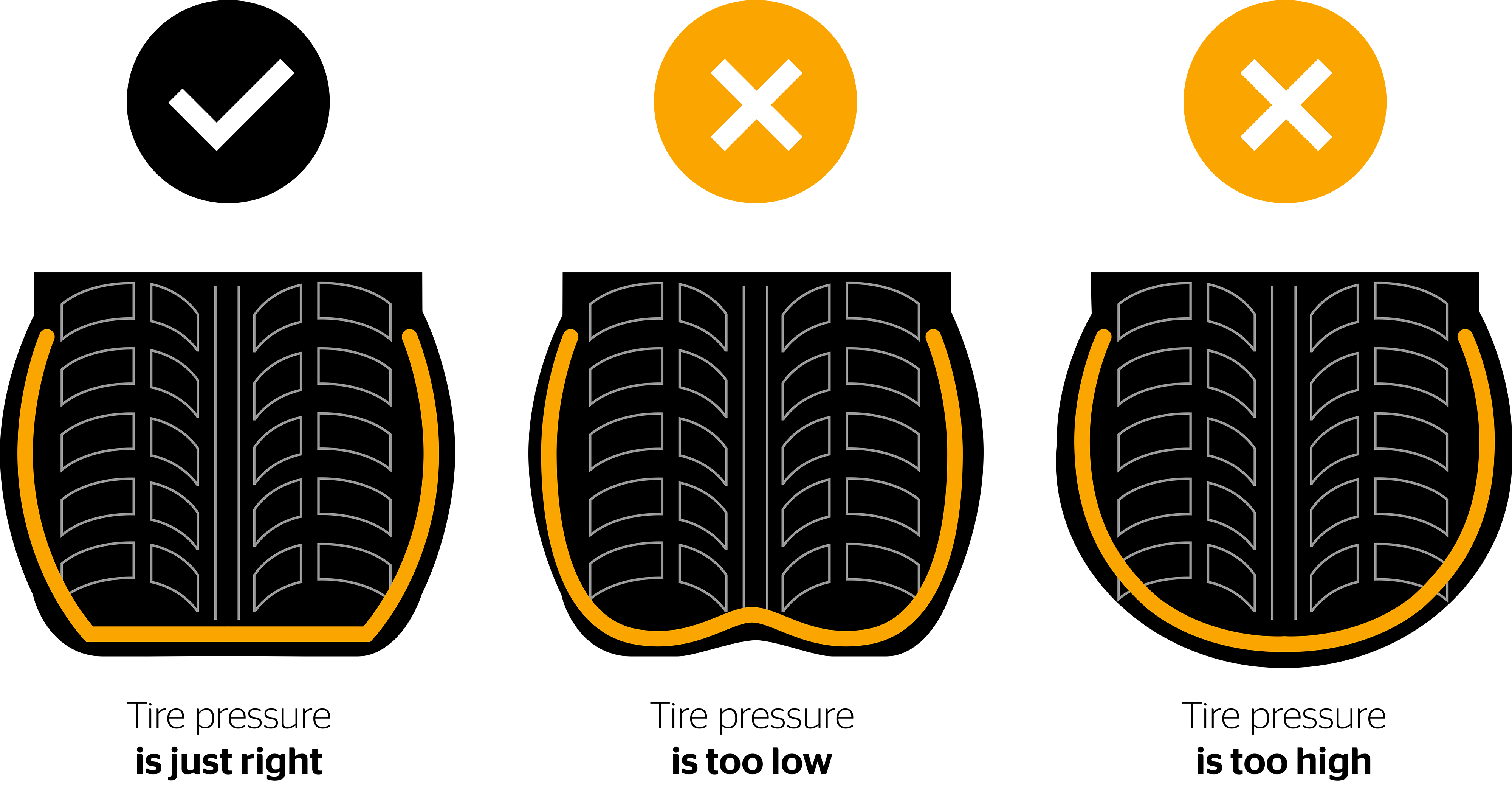# Tyre Care and Maintenance
Tyre pressure
Why you should check your tyre pressure once a month
Many accidents are caused by underinflated tyres. If you’re not doing it already, it’s time to start checking your tyres every month. You’ll be saving money, and you could save lives.
Isn’t once every few months enough? No, it isn’t. There are many reasons why you need to check tyre pressure every month.

Save money. Tyres wear out faster if they’re underinflated, and they wear irregularly if they’re overinflated – so in both cases you’ll need to buy new tyres more often. Proper care stabilizes the tyre structure and can extend the average life of a tyre by a staggering 4,660 miles or 7,500 km.
And you’ll save on fuel: if the tyres are underinflated, the vehicle will consume more fuel per mile travelled, and thus achieve lower mileage.
Enjoy a more comfortable ride. Properly inflated tyres influence the responsiveness of the vehicle, and its handling and performance. Which takes us to the next point.
Safety first. If tyres are under or overinflated, handling is affected. Handling becomes sluggish if the tyres are underinflated, and dangerous if they’re overinflated, especially if you’re cornering at high speed. Stopping distance, braking grip and directional stability are all affected. As your tyres struggle to stay on the road, heat builds up, making blowouts more likely and increasing the chances of a serious accident.

Consider the environment. If your car’s tyres are underinflated by just 0.3 bar, rolling resistance is increased, so your vehicle will consume about 1.5 percent more fuel and therefore release more CO2. Proper inflation means a perfect balance of maximum safety and fuel economy. Your tyres will last longer and you’ll reduce your carbon footprint.

How do I check tyre pressure?
Tyre pressure is expressed as pounds per square inch (PSI). It’s based on a vehicle’s weight and size, and it’s important to use exactly the pressure that’s recommended for your vehicle by the manufacturer. This will ensure safety and optimal performance.
Check the pressure every two to four weeks, and always before setting off on longer journeys or if you’re carrying additional loads.
Cold tyres. You’ll get a more accurate reading if you check the pressure when the tyres are cold, before the outside temperature rises and the tyres are exposed to direct sunlight. If the outside temperature increases by 10 degrees Celsius, the tyre pressure will increase by 1.6 PSI. In winter, in some climates, tyres could experience a drop of up to 5 PSI.
Find the handbook. Identify the manufacturer’s recommended pressure for the front and rear tyres of your particular vehicle. This is the minimum amount of air pressure needed in cold tyres to support your vehicle. You’ll probably see two figures, one for normal use and one for full loads; it will look something like “35 PSI.”
You’ll find this either in the vehicle handbook in the car, or inside the fuel filler cap, or on the driver’s door post. If you can’t find it, consult your vehicle dealer, manufacturer or qualified tyre professional.
The gauge. Use a reliable, accurate tyre pressure gauge either at home (you can buy one at an auto parts dealer) or at a gas station (tyre pressure gauges can be used free of charge). Gauges are either battery-operated digital gauges or more traditional stick-type gauges.
Check the tyre pressure. Remove the end cap on the tyre’s air valve and keep it safe. Place the gauge onto the valve stem and press down quickly and firmly until the hissing sound of air escaping stops. Your gauge will now show a reading of the PSI. Compare this with the manufacturer’s recommendation.

Adjust the pressure. If the reading is above the recommended value, push in the valve to let out some air. You may have to do this a few times until the gauge shows the correct reading. If the PSI reading is below the recommended value, use an air compressor (at the petrol station if you don’t own one) to fill the tyre with air until it reaches the correct level. Replace the valve cap tightly and repeat the process with the three remaining tyres, plus the spare tyre.

State-of-the-art technology
Continental has developed a Tyre Pressure Monitoring System (TPMS) that works with wheel sensors and brake systems to alert the driver to low tyre-pressure levels, via a dashboard warning light.
This invaluable safety feature also helps reduce fuel consumption and CO2 emissions, and increases the length of your car’s optimal performance lifespan.
However, even if your vehicle is equipped with a TPMS, you still need to check tyre pressure every two to four weeks, to ensure a better, safer driving experience.